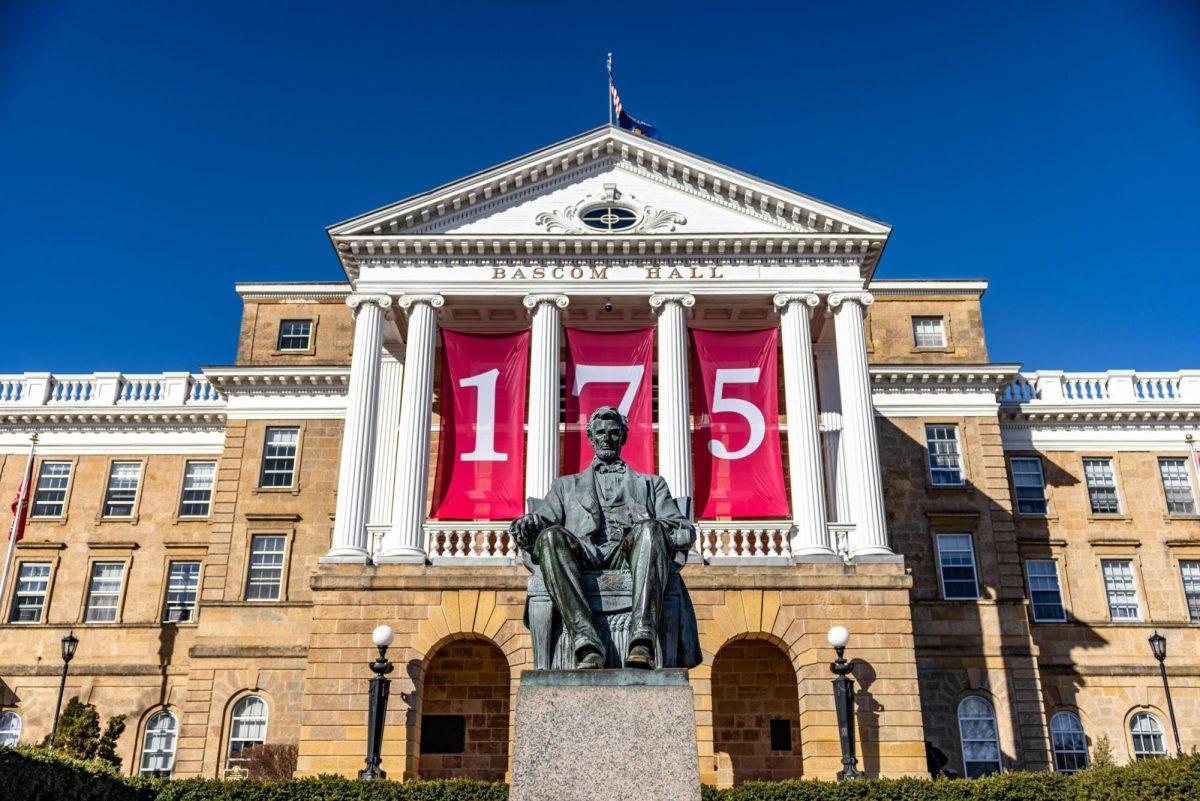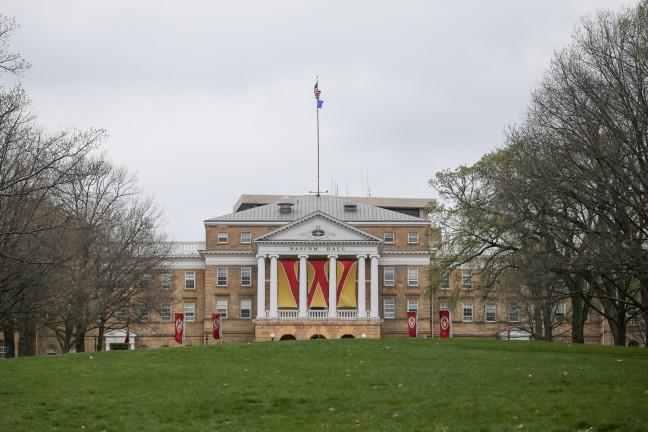Following a proposal presented to the University of Wisconsin System Board of Regents last week that would increase graduation rates across the UW System, concerns were brought forth over how the plan will be implemented and at what cost to students.
The Growth Agenda, presented by UW System President Kevin Reilly, outlines a proposal to be implemented over the next 15 years to increase graduation rates 30 percent by 2025.
Reilly said in his presentation, the main goals of the plan would be to produce more degree holders, create better paying jobs and build stronger communities in Wisconsin.
Currently, approximately one-fourth of adults in Wisconsin hold either an associate or a bachelor’s degree. The plan would include increasing this proportion to approximately one-half, according to a UW System release.
“We know that states that have more college graduates have higher per capita income,” Reilly said. “Minnesota has 32 to 33 percent [of their population] with degrees, and their per capita income is $5,000 ahead of ours.”
He added in addition to having higher per capita income, more graduates means lower crime rates.
In the presentation, Reilly stated the national average for those holding degrees is 27 percent, whereas only 25.5 percent of Wisconsin residents have degrees.
Miracle grow
According to UW spokesperson David Giroux, the plan will be to increase the number of degree holders by approximately 80,000 by 2025 — an increase of 7,000 undergraduate degrees per year.
He added the retention and graduation rates are two different numbers. The plan will be put in place so universities have the chance to close gaps particularly with lower income, minority students or those who drop out of school at higher rates because ‘life happens.’
“It would involve finding adults who are close to earning their degrees but didn’t finish for some reason or another,” Giroux said. “Have them finish with distance learning and online classes.”
Growing pains
Concern over whether the plan would involve increased enrollment and class sizes is a valid point, according to pharmacy professor Weiyuan John Kao.
“I’ve taught at UW-Madison for 12 years,” Kao said. “And yes, in that time there have been increased class sizes.”
Kao said when he first taught a class, there were less than 20 students in it. However, in spring 2009 there were more than 90 students enrolled in the class.
“At the beginning, we had no TAs,” Kao said. “We’ve gradually fought for more TA support and currently have two and one-fourth TA appointments.”
Kao added professors have to balance course accessibility with effective teaching and learning.
Political science professor Nils Ringe teaches large lectures with more than 350 students as well asalso small discussion-type classes with less than 20 enrollees.
“If there was a real influx of additional students, I would hope it would mean we are given the resources to handle that properly,” Ringe said.
Associate Dean for Undergraduate Education and Academic Administration Nancy Westphal said there have been years recently when the UW campus ended up enrolling more students than expected.
“We generally expect between 5,600 and 5,700 new first-year students, but, for example, in fall 2007 we ended up with just short of 6,000 students and in fall 2005 we had over 6,100 new
first-year students,” Westphal said in an e-mail to The Badger Herald.
She added when these increases have occurred, UW has been very responsive in providing additional resources to the College of Letters and Science, since most students enroll in those classes when they first schedule.
Westphal said the L&S departments work hard to accommodate extra students by increasing the enrollment of classes, opening new sections and adding more TAs and other qualified teaching staff.
She added as students determine their majors, there is less strain on classes as students branch out into the more specific, upper-level courses.
Growth spurts
Giroux said any concerns about increased enrollment are unfounded at this stage in the plan.
“[The plan] may result in some enrollment increases on some campuses; it will be hard to project what enrollments will be by 2025,” Giroux said. “But the goal is not to increase enrollment. Confusion about this is understandable.”
During his presentation to the regents, Reilly said each university and college in the system would find how best to fit the projected number of goals in various ways.
One projection that compared the UW System’s goals for university and college degrees by 2025 showed UW-Milwaukee having the highest projected increase at 14,050 while UW would increase by 4,950.
Giroux said this takes into account attracting more first-generation students and minorities to continue on to higher education. UW-Milwaukee, he said, is currently the only UW school for which Growth Agenda is considering increasing enrollment.
According to Dean of Students Lori Berquam, projected enrollment rates for UW hold steady, particularly over the course of the next few years.
Money doesn’t grow on trees
Reilly said the budget for the plan has not yet been determined, as each university and college in the UW System will have different means and contributions for implementing and initiating the goal.
The request for the state biennium budget 2011-13 will be made in August 2010 and approved by the state Legislature in July 2011, according to Regent David Walsh.
Executive Secretary for the Higher Educational Aids Board Connie Hutchison said she is 100 percent behind the Growth Agenda Plan and applauded the Board of Regents for its foresight.
“This is a good investment to make. The more students we can get with degrees, the better off the state economy will be,” Hutchison said.
She said the most important factor was working closely with UW System in finding financial aid for students as well as continuing work with the governor, Assembly and senators.
“[They] need to understand our combined message that it’s not just about giving money to students who need it, but giving students access to college. It’s getting students the means to follow through and get a degree,” Hutchison said.
She added UW System is working with HEAB to put together a conference to attract more educational foundations, partners in the private sector and sources of private money as well as pushing for state and federal dollars.
Rep. Spencer Black, D-Madison, said using higher education dollars efficiently in part means having students graduate, but also having the jobs necessary for them after graduation.
“It appears [regents] are laying out a vision,” Black said. “There’s a ways to go before they implement a specific plan.”
He added much could be done in relation to the university’s initiatives and internal policies, and when those are laid out, then that would be where the universities would need legislative support.
Rep. John Townsend, R-Fond du Lac, said the current problem was the lack of jobs to support increased graduation rates.
“[Adults without degrees] are already in the workforce. That is a strategy for the regents to increase the number of graduates, by bringing them back,” Townsend said. “But if we don’t have the jobs when they graduate, we’re going to lose them.”
All grown up
Berquam said UW already has a good retention rate for students staying and advancing toward their college degrees.
“Something the Letters and Science deans have been working on is trying to identify students who are at risk for failing, and [they] have proactive academic advising strategies for helping them in their career path,” Berquam said.
She said in a recent analysis nearly 1,000 students were found to be on academic probation.
“Many would say they are disconnected from advisers or that there are not enough available resources to help them,” Berquam said. “So we need to connect those students to resources they may not know about; assist them in being better students.”
Kao said in the case of the effects of student learning, changing class sizes can have a direct effect on how students can learn more. The benefits of an enrollment increase would be very difficult to define, depending on how it was measured.
“Students are more inclined to raise their hand and participate in smaller classes compared to having 90 pairs of eyes on you in a larger lecture…,” Kao said.
Opening up classes to larger enrollment, he added, would create more diversity, which in turn would promote dialogue and cross-pollination of students from different majors.
Growing, growing
Giroux said the plan is still quite new. At the moment no action is necessary, he said, adding that implementation will be a long process.
“We’ve laid out a number of goals and strategies,” Giroux said. “[The UW System] has never undertaken this kind of rigorous progress to lay out some hard targets.”


















